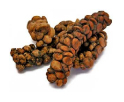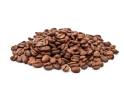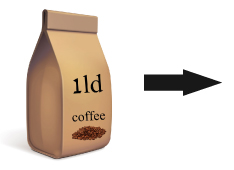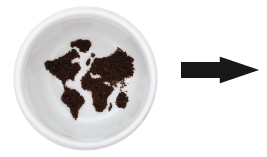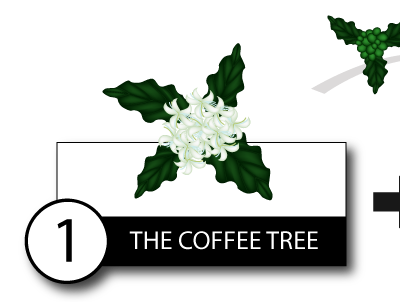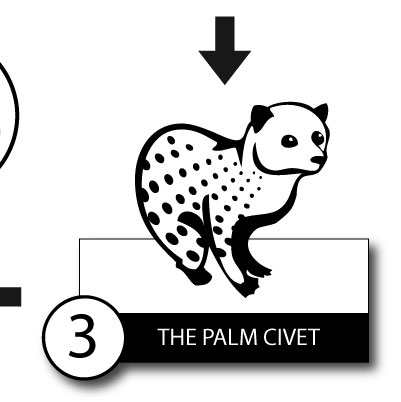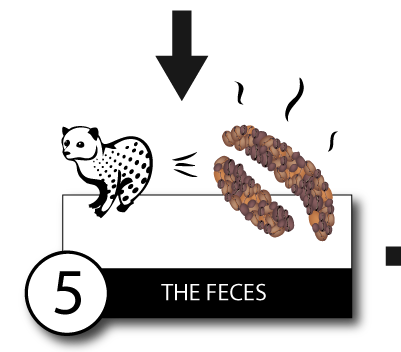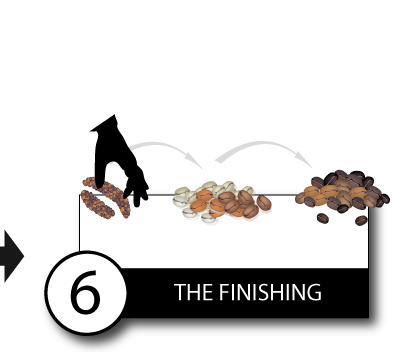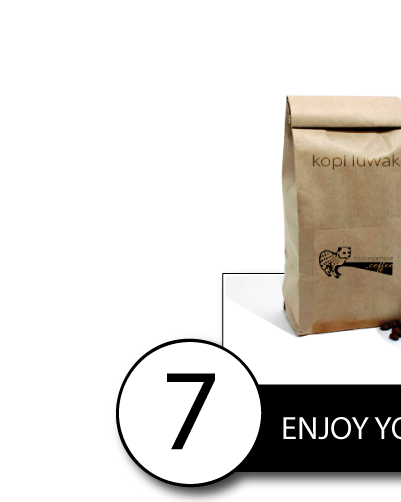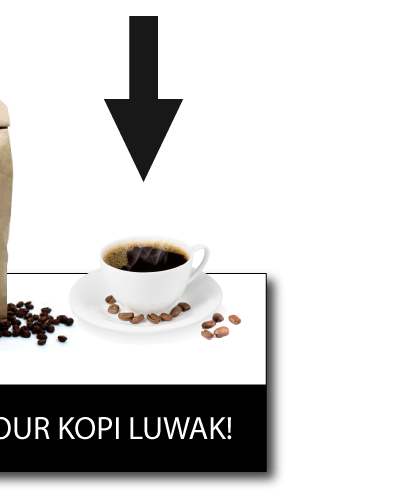Kopi luwak is the world’s most expensive coffee. The main factor of it’s high price is the uncommon method of producing such a coffee. It has been produced from the coffee beans which have been digested by a certain Indonesian cat-like animal called then palm civet or also civet cat. This is the reason kopi luwak is also called cat poop coffee or civet cat coffee. The feces of this cat will be collected, finished and sold as kopi luwak. On this website you will find all relevant information about the production process, the cat, certified kopi luwak producers, the kopi luwak coffee itself and it’s unique properties and taste. The short supply, in comparison with the high demand, the different taste and the uncommon production methods define the value of kopi luwak – the most expensive coffee in the world.
Update 2019: The hype of being “the most expensive coffee in the world” leads coffee producers to achieve this status by setting artificial prices. There are some coffee types, which are meant to be more expensive then Kopi Luwak. These coffees, which prices are labeled at around 500$ per pounds, are:
- Black Ivory Coffee
- Finca El Injerto Coffee
- Hacienda La Esmeralda
We are focusing on prices on regular “supply and demand” basis. Kopi Luwak is still the most expensive coffee in the world.
Here is a price comparison of a kopi luwak coffee with an average coffee brand:
Why is Kopi Luwak so special and the most expensive coffee?
The most important reason of the coffee’s speciality is the production process. Have a look at the pictures below to see how the most expensive coffee is produced: from beans fallen from a coffee tree to a cup of Kopi Luwak coffee. If you want more details about each step, just click on “more..” in each section. Hint: Wanna boost your morning routine and start your day with a laugh: Use one of these funny coffee mugs.
enjoy the cup!
Important: You should pay attention when buying Kopi Luwak coffee!
The keyword in this sense is animal friendly and “authentic“, which means it’s coffee cherries have been eaten, digested and excreted by wild living and non-caged civet cat, collected by farmers and sold to roasters to prepare for human consumption. The potential in selling of kopi Luwak is high, which allures alot business people trying to skim the market with wicked methods:
1.) “Fake” kopi luwak / Civet coffee
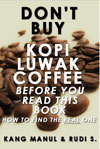
Around 70% of kopi luwak coffee or civet coffee available at coffee stores and the Internet is NOT 100% pure kopi luwak and sometimes it does not contain anything of the genuine coffee. Mark Prince of the popular industry forum Coffee Geek has stated, “There is probably 5,000 percent more kopi luwak sold each year than there is actually produced; production of the legit stuff runs less than 5,000 pounds per year. Why? Because there’s lots of snake oil salesmen packaging up plain Jane inferior commodity grade Indonesian coffees under this banner and trying to get $300 per pound for it.” If you need a detail explanation of the fake potential of kopi luwak, we recommend reading “Don’t Buy kopi luwak Coffee Before You Read This Book”, which gives some great advices. The “Fake” seller try to sell the “most expensive coffee” for a high price with low producing costs.
2.) “Cruel” kopi luwak farms / caged civet cats
Natural kopi luwak, which is harmless to the animals, is found on plantation grounds and collected for roasting. Unfortunately, the farmers of this expensive bean found too high a demand for the coffee and started to harvest the beans unnaturally. Farmers stopped worrying about the natural cultivation of the product and rather looked for ways to yield the highest profit. The answer? Farmers gathered and caged an over-abundant amount of civets and started to almost exclusively feed them coffee beans. High-end pricing turned farming civet cats for kopi luwak coffee into a enslavement industry. Hundreds of the animals can be caged together where they fight or gnaw at their own limbs due to mental distress. Many farmers are uneducated on how to care for their animals and stand by as many succumb to illness and death.
The differences between kopi luwak from farmed and wild civet cats:
| FARMED CIVET CATS |
WILD CIVET CATS |
|---|---|
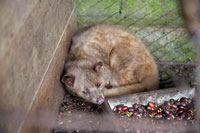 |
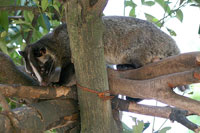 |
Q U A L I T Y: farmed vs. wildKopi luwak has traditionally consisted of the best quality, ripest coffee cherries the luwak has selected and chosen to eat while leaving the vast majority of presumably inferior cherries uneaten. This is certainly a major factor in the final quality of the kopi luwak produced. Feeding luwaks coffee cherries to the exclusion of other foods will of course ensure they eat the cherries; however the cherries have not been selected by the luwak and are therefore not of the standard that is produced when the luwak is free to roam a coffee planation. The result is that kopi luwak produced by animals that are caged and farmed is inevitably of lower quality than wild/ free range luwaks. |
|
 Farmed civet palms do not select the ripest coffee cherries but merely eat to satisfy their hunger from the provided options. |
 Wild civet palms select only the ripest coffee cherries, which bears comparison with an automated filter for ’best quality’ berries. |
C R U E L T Y: farmed vs. wildFarmed civet palms are kept in a small wooden cell where its job is to eat and defecate. The animals select their berries from bowls instead of bushes. No more roaming the forests for these graceful cat-like creatures; a practice some connoisseurs’ claim leads to beans literally tainted by stress. Due to overfeeding of unripe coffee cherries while captive, the civets become ill. It is evidenced by bloody feces; however, once bleeding occurs, it is often too late to save the creatures |
|

|

|
C O N C L U S I O NTo sum up, kopi luwak cage farming is a cruel method for civet palms and has an output of low-quality unauthentic kopi luwak coffee. |
|
[do_widget_area]
